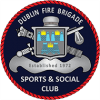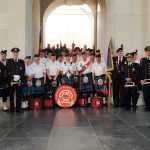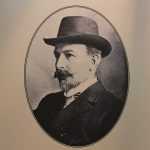We spoke with Martin O’Reilly, EMS Support Officer, Dublin Fire Brigade, to discover more about the chain of survival in Dublin city and county, and how the fire-based EMS service model ensures the effectiveness of this chain.
According to the HSE, surviving a cardiac arrest at any age is “directly related to time to resuscitation and particularly defibrillation”. These are two links in what is known as the ‘chain of survival’ for out of hospital cardiac arrest: early recognition, immediate and effective cardiopulmonary resuscitation, rapid defibrillation, pre-hospital advance life support, and postresuscitation care and aftercare.
Take early and effective CPR, which can keep the brain and vital organs oxygenated, and can also buy time for effective defibrillation to take place – either by members of the public or the emergency services. Time is key, and CPR should commence as soon as possible following a cardiac arrest to provide the best chance for a positive outcome. “We know that after a patient suffers a cardiac arrest, if nothing is done then the patient’s chance of survival diminishes by between 7 and 10 per cent with every minute that passes. Providing bystander CPR gives the patient the best chance possible towards a successful outcome,” explains Martin O’Reilly, EMS Support Officer with Dublin Fire Brigade.
In Dublin and the surrounding area, Dublin Fire Brigade is a key part of this chain and regularly responds to such instances across the capital. DFB recently attended an adult male patient, whose cardiac arrest had been witnessed by a member of the public. The emergency service controller (ESC) provided CPR instruction to the caller over the phone, enabling bystander CPR to take place on scene prior to DFB’s arrival, and simultaneously dispatched the required resources to the scene. “We had paramedics quickly on scene on the fire appliance and an advanced paramedic providing advanced life support as part of the ambulance crew,” says O’Reilly. “The crew achieved a return of spontaneous circulation on scene and commenced post-resuscitation care. The patient was then transported to the nearest emergency department to continue this care. This patient benefited from all of the links in the chain of survival, which greatly increased his chances of survival and is an excellent example of an EMS system working at its best.”
Two-pronged approach
The citizens of Dublin city and county benefit from DFB’s fire-based EMS service, in which firefighters are also trained paramedics. The system is in operation in a number of jurisdictions around the world, particularly in large urban centres, including fire departments across the USA, France and several in Germany, and plays an important role in ensuring a functioning chain of survival.
As O’Reilly outlines, the fire-based EMS system in Dublin ensures the use of a structured approach when responding to cardiac arrests. The nearest fire appliance and ambulance are dispatched to a call, ensuring a sufficient number of paramedics to effectively manage a cardiac arrest. Alongside its clinical abilities, the fire appliance with paramedics onboard also facilitates a rapid response to immediately life-threatening calls – in 68 per cent of cardiac arrests the fire appliance will arrive in advance of the ambulance due to its strategic location and availability.
“Many 112/999 calls are of a medical and traumatic nature, involving single or multiple patients, and have a requirement for additional clinical resources and personnel to perform physical rescue, extrication etc. Firefighter/paramedics provide rescue/extrication skillsets as well as an additional response where needed. These additional resources also improve patient, bystander and practitioner safety on scene,” says O’Reilly.
The combined firefighting and paramedic training all DFB recruits receive proves highly useful within situations that require medical and rescue response – one response vehicle can provide both skillsets. DFB personnel are educated and trained to perform multiple functions, including hazardous materials response, road traffic collision extrication, highline rescue, swiftwater rescue, and pre-hospital emergency care.
“Firefighter/paramedics uniquely can provide patient treatment and rescue immediately on arrival. These highly trained professionals are a valuable resource and a huge benefit to the patient and the community,” O’Reilly explains. “Another important benefit of having multi-skilled FF/P within a fire-based EMS service is seen when a major incident occurs with many casualties involved. A fire-based EMS service can deploy large numbers of equipped paramedics to the scene from its fire service vehicles immediately. They can commence triage, treatment and stabilise patients on arrival at the scene.”
The ability of Dublin Fire Brigade’s fire-based EMS system to simultaneously dispatch fire and EMS resources is vital and saves precious minutes, particularly in life-threatening situations where every second counts, often making the difference between life and death in cases like cardiac arrests. This approach also reduces on scene time and helps get patients to hospital and definitive care much sooner – important links in a patient’s survival.





